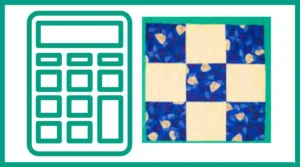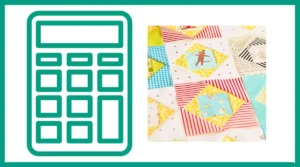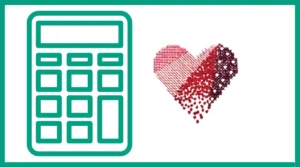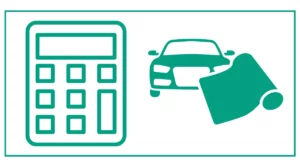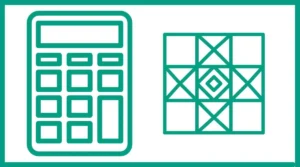Quilt Binding Calculator
What is a Quilt Binding Calculator?
Our Quilt Binding Calculator helps quilters determine the exact amount of fabric needed for binding their quilts. It takes into account various factors such as the quilt’s dimensions, desired binding width, and seam allowances to provide accurate calculations. This eliminates guesswork and ensures that you purchase and prepare the right amount of fabric for your project.
Why Use a Quilt Binding Calculator?
Using a Quilt Binding Calculator offers several advantages:
- Accuracy: It provides precise measurements, reducing the risk of running short on fabric or wasting excess material.
- Time-saving: Eliminates the need for manual calculations, which can be time-consuming and prone to errors.
- Cost-effective: Helps you purchase the exact amount of fabric needed, avoiding unnecessary expenses.
- Versatility: Can be used for quilts of various sizes and binding styles.
- Confidence: Gives you peace of mind knowing that you have the right amount of fabric for your project.
How to Use the Quilt Binding Calculator
Our Quilt Binding Calculator is designed to be user-friendly and straightforward. Follow these steps to get accurate results:
- Measure your quilt’s width and length in inches.
- Determine the width of your binding fabric (typically 42-44 inches for standard quilting cotton).
- Decide on the width of your binding strips (commonly 2.25 or 2.5 inches).
- Choose your desired overage (extra length for joining the ends).
- Select your preferred seam type (mitered or straight).
- Enter these values into the calculator.
- Click the “Calculate” button to get your results.
The calculator will provide you with the total yardage needed, the number of strips to cut, and instructions for joining the strips.
Understanding the Calculator’s Input Fields
Let’s break down each input field to ensure you enter the correct information:
Width and Length of Quilt
Enter the exact measurements of your quilt in inches. For example, if your quilt measures 60 inches wide by 80 inches long, enter 60 in the “Width of Quilt” field and 80 in the “Length of Quilt” field.
Width of Binding Fabric
This refers to the width of the fabric you’ll use for binding. Most quilting cottons come in 42-44 inch widths. If you’re using a different fabric, measure its width and enter that value.
Width of Binding Strips
This is the width at which you’ll cut your binding strips. Common widths are 2.25 inches for a narrow binding and 2.5 inches for a slightly wider finish. Choose based on your preference and the thickness of your quilt.
Desired Overage
Overage is extra length added to ensure you have enough binding to join the ends comfortably. A typical overage is 10-12 inches, but you can adjust this based on your comfort level.
Seam Type
Choose between mitered (diagonal) or straight seams for joining your binding strips. Mitered seams distribute bulk more evenly but require more fabric. Straight seams are simpler but may create more bulk at the joins.
Interpreting the Calculator’s Results
After clicking “Calculate,” you’ll receive the following information:
- Total yardage needed (in yards and meters)
- Number of strips to cut
- Instructions for joining the strips
This information allows you to purchase the right amount of fabric and prepare your binding efficiently.
Example 1: Binding a Lap Quilt
Let’s walk through an example to illustrate how the calculator works:
Suppose you have a lap quilt measuring 50 inches wide by 60 inches long. You want to use 2.5-inch wide binding strips cut from 44-inch wide fabric. You prefer a 12-inch overage and mitered seams.
Inputs:
- Quilt Width: 50 inches
- Quilt Length: 60 inches
- Fabric Width: 44 inches
- Strip Width: 2.5 inches
- Overage: 12 inches
- Seam Type: Mitered
After entering these values and clicking “Calculate,” you might receive results like this:
“Purchase 0.58 yard(s) or 0.53 meter(s) of Binding Fabric. Purchase extra in case the edge is not cut straight at the store. Exactly 21 in (53.3 cm) is needed for strips. Cut 7 strips from the binding fabric at 2.5 inches wide. Join the strips together with Diagonal or Mitered seams.”

Example 2: Binding a Queen-Size Quilt
Now, let’s look at a larger project:
You’re binding a queen-size quilt measuring 90 inches wide by 108 inches long. You want to use 2.25-inch wide binding strips cut from 42-inch wide fabric. You prefer a 10-inch overage and straight seams.
Inputs:
- Quilt Width: 90 inches
- Quilt Length: 108 inches
- Fabric Width: 42 inches
- Strip Width: 2.25 inches
- Overage: 10 inches
- Seam Type: Straight
The calculator might provide results like this:
“Purchase 1.06 yard(s) or 0.97 meter(s) of Binding Fabric. Purchase extra in case the edge is not cut straight at the store. Exactly 38 in (96.5 cm) is needed for strips. Cut 17 strips from the binding fabric at 2.25 inches wide. Join the strips together with Straight seams.”
Tips
- Double-check your measurements: Accurate input leads to accurate output.
- Round up when purchasing fabric: It’s better to have a little extra than to run short.
- Consider your quilt’s thickness: Thicker quilts may require wider binding strips.
- Experiment with different inputs: Try various strip widths or seam types to see how they affect the results.
- Use the calculator for other projects: It can be helpful for table runners, placemats, and other bound items.
Common Mistakes
- Cutting binding strips against the grain: Always cut binding strips on the bias or straight grain for stability.
- Not accounting for seam allowances: The calculator factors this in, but be aware when cutting and sewing.
- Joining binding ends incorrectly: Follow proper techniques for a smooth, nearly invisible join.
- Pulling binding too tight: This can cause your quilt edges to pucker. Keep it snug but not tight.
- Inconsistent seam allowance: Maintain a consistent seam allowance when attaching the binding to your quilt.

